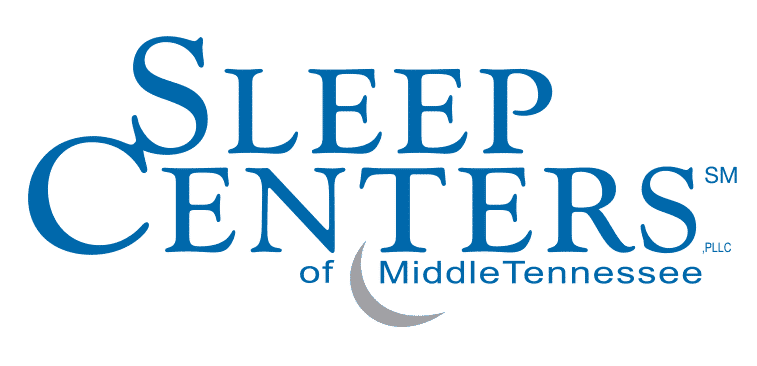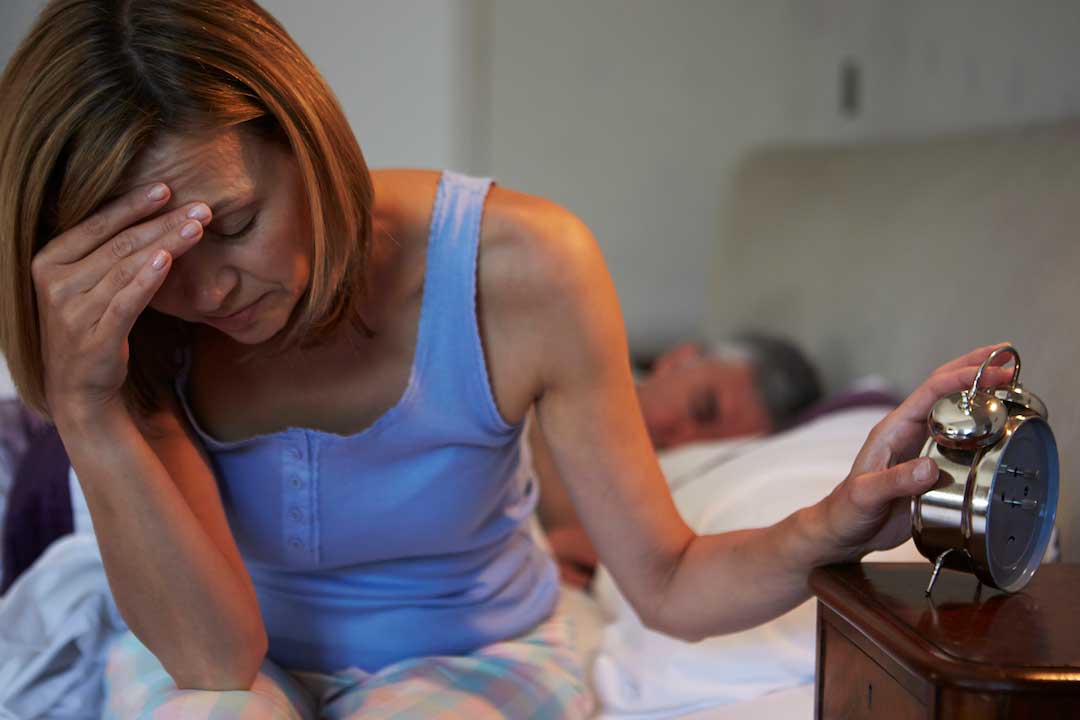How do you know when it’s time to schedule a sleep test? There are a number of telling signs that will let you know.
These signs go beyond having a difficult time getting a good night’s sleep, too. Sleep disorders can rear their ugly heads at any time of the day. This makes it especially difficult for you to have energy throughout the day – for work or for play.
This doesn’t have to be the case. Sleep Centers of Middle Tennessee conducts over 5,000 in-lab sleep studies each year in addition to home sleep tests for sleep disorders like sleep apnea. We not only help our patients pinpoint their sleep disorder, but we also have an entire team dedicated to coming up with a treatment plan that will help you sleep better and improve your health.
In years past, some patients have shared that they were initially anxious about scheduling their sleep test. Some were uncomfortable spending a night away from home, while others said they were afraid to find out what was impacting their sleep. But when it comes to sleep, ignorance isn’t bliss. There are 90 different kinds of sleep disorders, and they all carry certain health risks.
Sleep apnea, in particular, is a disorder we’re focused on treating. In the U.S., more than 25 million people suffer from sleep apnea. Left untreated, sleep apnea can contribute to a number of health problems including:
- Diabetes
- High blood pressure
- Cardiovascular disease
- Stroke
- Heart attack
The good news is, sleep apnea is a disorder that is easy to diagnose and can be treated. And an overnight sleep study or a sleep test is a great first step towards getting better, more productive rest.
If you have been dealing with any of the following issues, consider them an important warning sign. It’s an indication you should seek an evaluation from a reputable sleep center. Ideally, you’ll locate one that specializes in sleep and diagnosing sleep disorders with highly trained sleep technologists that perform in-lab sleep studies or can provide a home sleep apnea test.
Snoring
Snoring is perhaps the best-known indicator someone is suffering from sleep apnea.
Snoring occurs when the throat tissue relaxes and causes a partial blockage of the airway. The partial blockage leads to the vibration that causes the snoring sound. Snoring can be amplified by several factors, including weight, age, and alcohol consumption.
80% of people who snore have obstructive sleep apnea (OSA). If you snore you should seek an evaluation. This is especially true if either of your parents had sleep apnea. This is because of its hereditary nature.
The more obvious signs to look for when it comes to sleep apnea are: loud snoring, gasping for air while asleep, and waking up during the night. But even occasional or light snoring indicates a blocked airway, and the earlier you’re diagnosed and treated, the better it is for your heart, brain, and overall health.
Although snoring tends to become louder and more frequent as people grow older, especially for women, due to throat narrowing and muscle tone loosening, it shouldn’t be ignored when it’s softer and more infrequent. It’s a major warning sign of sleep apnea, also known as sleep disordered breathing, which isn’t the “old person’s” disorder it’s often mistaken to be. Sleep apnea affects all ages.
Depression
Depression and sleep disorders often go hand-in-hand.
Several studies in recent years have highlighted the connection between depression and problems sleeping. One study, from a team of researchers in London, found up to 75% of people suffering from insomnia also suffer from depression. Another study from 2014 found nearly 50% of participants suffering from sleep apnea also showed depressive symptoms.
At the foundation of this research is the understanding sleep and mood are closely linked. Without quality rest, depressive symptoms are more difficult to treat.
Which health issue should be treated first? Research indicates treating depression without remedying the underlying sleep disorder will lead to underwhelming results. Those suffering from depression should look to treat sleep apnea and other sleep disorders as part of their overall strategy to relieve depressive symptoms.
Fatigue
Do you find yourself getting extremely tired around midday? Or is a nap an integral part of your day-to-day life? If so, you’re likely not getting enough quality sleep at night, which bleeds over into the day and leads to lingering fatigue.
Sleep apnea, by definition, prevents you from getting the kind of restorative sleep needed to tackle your day. During the night, sleep apnea can cause dozens of breathing stoppages each hour — leading your brain to jolt you awake and make sure you’re getting enough air. The constant tension between sleep apnea and the brain manifests itself in poor sleep that leads you to feel tired and irritable the following day.
Research indicates treating sleep apnea with CPAP or continuous positive airway pressure — the nighttime machine that helps increase air pressure to your throat, leading you to breathe easier — significantly reduces fatigue.
Lack of Concentration
Consistent memory lapses and an inability to concentrate are two telltale signs of sleep apnea.
Untreated sleep apnea can lead to a severe reduction in white matter fiber integrity in the brain; this is important, because white matter acts as the subway system of the brain, connecting gray matter and helping different parts of the brain connect. When this system is impacted by sleep apnea, it leads to memory and focus issues.
The good news: CPAP treatment has been shown to reverse the damage on white matter in the brain — and help those suffering from sleep apnea concentrate better as a result. One study found that 12 months of CPAP treatment led to an “almost complete reversal” of white matter abnormalities in the brain.
Insomnia
Insomnia, or the inability to fall asleep at night, is a common disorder that many Americans deal with at some point in their lives.
It’s also a sleep disorder that’s closely linked with sleep apnea. Research has shown there’s a healthy probability that if you suffer from long, restless nights, you are also suffering from sleep apnea.
One study from 2019 found 38% of sleep apnea patients also suffer from insomnia, and another 42% who have a hard time maintaining sleep throughout the night also suffer from sleep apnea.
Many patients seeking treatment for insomnia are only able to get a good night’s sleep after they’re evaluated for sleep disordered breathing and are properly diagnosed with sleep apnea.
Next Steps
The five aforementioned signs are indicators of an often undiagnosed but common sleep disorder we can help you with.
Sleepless nights and tired, listless days don’t have to be the norm; these are treatable issues that can be resolved, but the first step is getting the help you need.
If you’re experiencing any of the signs listed above, take the first step and schedule an evaluation. Your evaluation will determine whether an in-lab sleep study or home sleep apnea test is needed. Participating in this easy and painless sleep test can pinpoint the serious disorder preventing you from getting quality sleep.
Our highly trained staff at the Sleep Centers of Middle Tennessee has successfully treated all 90 recognized sleep disorders, including sleep apnea and insomnia. We’re prepared to help you get a better night’s sleep. Make an appointment with Sleep Centers of Middle Tennessee today and we’ll help you get back on the path to a healthy, good night of sleep.
References
Nutt, D., et al. (2008). Sleep disorders as core symptoms of depression. Dialogues Clin Neurosci 10(3): 329-336. Retrieved on February 27, 2020 from:
https://www.ncbi.nlm.nih.gov/pmc/articles/PMC3181883/
Rezaeitalab, F., et al. (2014). The correlation of anxiety and depression with obstructive sleep apnea syndrome. Journal of Research in Medical Sciences 19(3): 205-210. Retrieved on February 27, 2020 from:
https://www.ncbi.nlm.nih.gov/pubmed/24949026
McCall, W., et al. (2019). Prevalence of obstructive sleep apnea in suicidal patients with major depressive disorder. Journal of Psychiatric Research 116: 147. Retrieved on February 26, 2020 from:
https://www.sciencedaily.com/releases/2019/07/190723104041.htm
Tomfohr, L.M., et al. (2011). Effects of continuous positive airway pressure on fatigue and sleepiness with obstructive sleep apnea: data from a randomized controlled trial. Sleep 34(1): 121-126. Retrieved on February 26, 2020 from:
https://www.sciencedaily.com/releases/2011/01/110102202235.htm
Castronovo, V., et al. (2014). White matter integrity in obstructive sleep apnea before and after treatment. Sleep 37(9); 1465-1475. Retrieved on February 26, 2020 from:
https://www.ncbi.nlm.nih.gov/pmc/articles/PMC4153061/
Janssen, H., et al. (2019). Management of insomnia in sleep disordered breathing. European Respiratory Review 28. Retrieved on February 27, 2020 from:
https://err.ersjournals.com/content/28/153/190080

